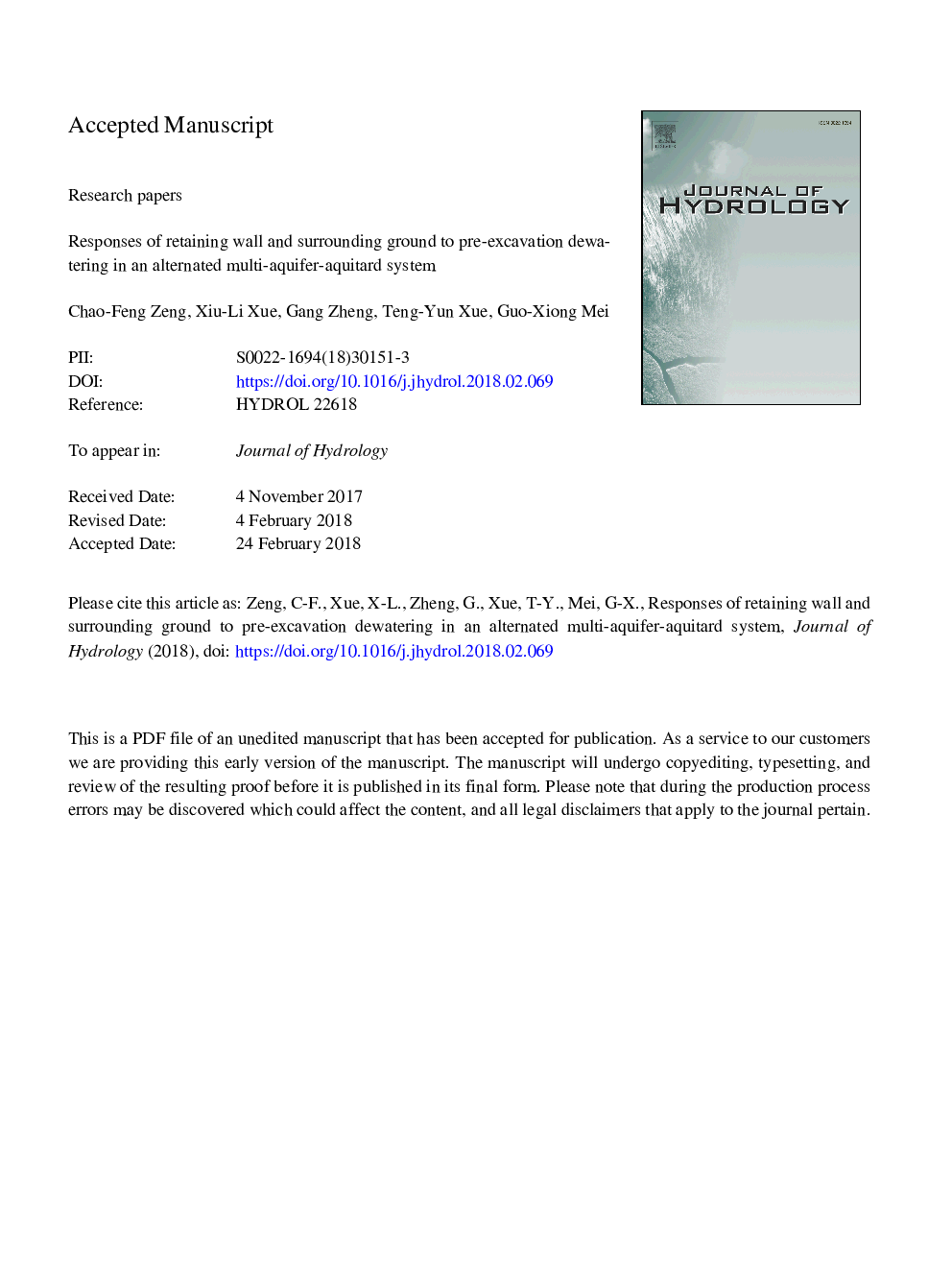| Article ID | Journal | Published Year | Pages | File Type |
|---|---|---|---|---|
| 8894926 | Journal of Hydrology | 2018 | 54 Pages |
Abstract
Pre-excavation dewatering (PED) is an important construction stage in deep excavation. Field measurements show that retaining walls can develop obvious deflections during PED, which has been rarely considered in the past. The characteristics of PED-induced wall deflection, and the relationship of this deflection to surrounding ground deformation are still unclear. In this study, a PED test is simulated by a numerical model. The model is verified by field observations and used to investigate the responses of retaining wall and surrounding ground to PED. Results indicate that the maximum wall defection (δhm) and surface settlement (δvm) can all reach centimeter level under common conditions of PED. The ratio of δvm to δhm varies at the range of 0.45-0.67. Wall and soil deformations will be more obvious if the soils within the dewatering depth (Hd) have better permeability. The relative positions between Hd and strata (i.e., aquifer or aquitard) have great influence on the PED-induced deformations. If an aquifer appears below Hd, further increasing Hd can induce a rapid growth of wall and soil deformations. If thick aquitard appears below Hd, the deformation increments by further increasing Hd are not apparent. However, once Hd exceeds the center of the thick aquitard and reaches a thick confined aquifer, the wall deflections and soil deformation zones behind the wall will enlarge significantly. Meanwhile, a large bending moment in the retaining wall will arise around the bottom of the confined aquifer. The designers should consider this condition and allocate enough steel rebars there, preventing the appearance of wall cracks in the confined aquifer.
Keywords
Related Topics
Physical Sciences and Engineering
Earth and Planetary Sciences
Earth-Surface Processes
Authors
Chao-Feng Zeng, Xiu-Li Xue, Gang Zheng, Teng-Yun Xue, Guo-Xiong Mei,
